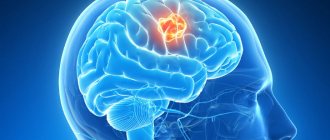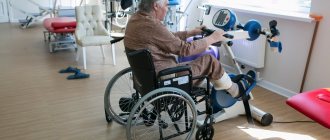Stroke (apoplexy, stroke) - a disorder of cerebral circulation - is considered a disease of old age, since the main risk factors are cardiovascular diseases, atherosclerosis, and hypertension. However, now more and more often able-bodied people become patients of neurologists.
Stroke in young people is not uncommon nowadays. This disease is rapidly getting younger. It is sad that emergency doctors often perceive the symptoms of a stroke as signs of other diseases, including psychogenic ones.
Causes of stroke at a young age
- increased levels of protein in the blood, diseases of the circulatory system;
- pathologies of the heart muscle and blood vessels;
- diabetes;
- various infectious diseases;
- benign and malignant tumors;
- side effects of drugs;
- bad habits.
An increased level of protein in the blood is an alarming symptom, which is an important indicator of protein metabolism. The higher the protein level, the more serious the disease. This may be an autoimmune process or a bacterial disease, as well as some chronic pathologies, such as polyarthritis. High levels of protein are the cause of arterial blockage and the formation of microthrombi.
Infectious diseases can also become a risk factor for an attack - they affect the biochemical composition of the blood. Examples of such infections are encephalitis, meningitis, and herpes.
Diabetes mellitus, both type 1 and type 2, affects blood vessels and the heart. Pathology in the system causes disturbances in cerebral blood flow.
Tumors (benign and malignant), as they increase in size, directly affect blood circulation and mechanically compress blood vessels.
Side effects of some medications may include conditions that can lead to stroke. Recently, with the development of social networks and the Internet, the problem has acquired frightening proportions. At a correspondence appointment, “specialists” prescribe medications without even looking at the patient’s tests. Patients themselves can, without the help of doctors, find a description of any drug, prescribe it for themselves (again, without tests or examinations) and buy it without a prescription (also via the Internet).
Of course, not all medications have such serious consequences. You need to be especially careful about hormones (or those substances that affect their levels), including birth control pills.
An unhealthy lifestyle is a topic that a specialist of any profile is ready to support. Drinking alcohol, smoking, and physical inactivity are the main risk factors. Add to this constant stress, nervous tension and lack of proper nutrition habits (in particular, a lack of protein in food and a large amount of processed foods and fast food) - and now we already have every chance of getting a stroke at a young age, the causes of which are so banal that many don't even believe it.
Expert opinion
Author: Polina Yuryevna Vakhromeeva
Neurologist
Stroke at a young age, according to WHO, is suffered by patients between 15 and 45 years of age. Young patients may rarely suspect acute cerebrovascular accidents, since stroke is traditionally considered a disease of older people. The incidence of ischemic stroke in young people is 5-14%, and women are more susceptible to the disease than men. Heart defects, surgeries on this organ, and hormonal imbalances significantly increase the risk of developing ischemic stroke among young people. The cause is most often dissection of intracranial and extracranial arteries. In second place is cardiogenic embolism.
In young patients, the mechanism of stroke is different than in older patients, so a different approach to diagnosis and therapy is required. At the Yusupov Hospital, according to the protocols for the examination and management of such patients, the specifics of stroke in young people are taken into account. Those studies are prescribed that are most appropriate if acute cerebrovascular accidents are suspected in young patients. During the rehabilitation period, exercise therapy instructors work with patients.
Prevention of stroke in patients with risk factors includes control of blood pressure, blood sugar levels, smoking cessation, adjustment of necessary drug therapy, adequate physical activity and diet.
Prevention
Regardless of age, it is important to monitor your blood pressure levels. If there are deviations from the norm, you should contact a specialist. The doctor will prescribe the necessary treatment and give recommendations regarding physical activity, nutrition and rest. Sometimes, during an examination, a young person may be diagnosed with atrial fibrillation or irregular heartbeats. This disease leads to blood stagnation, which in turn can result in a stroke. Any problems with blood circulation require consulting a doctor. Only timely assistance will save you from much more serious problems in the future.
Quitting smoking, controlling alcohol consumption, deciding to exercise, a properly selected diet, and autogenic training are the best prevention of ischemic stroke that a young person can do on his own.
Stroke is a real and serious threat to life. Therefore, from a young age it is necessary to pay attention to prevention, and also consult a doctor if warning signs appear.
Clinical Brain Institute Rating: 5/5 — 2 votes
Share article on social networks
Risk factors for stroke in young people
Genetics
A meta-analysis of twelve studies involving almost 60 thousand people found that there are four genes that influence susceptibility to apoplexy. In simple terms, if your parents (or grandparents) suffered an attack, then you should monitor your health very carefully.
Pathologies, anomalies and diseases of the heart and blood vessels
People with heart problems (ischemia, atrial fibrillation, valve pathologies) and developmental anomalies of this organ must monitor their condition and undergo regular examinations.
Diseases of the veins and arteries are also risk factors, but if you or your loved ones have already been diagnosed with them, it is important to monitor the quality and quantity of food, include physical activity in your regimen and regularly visit specialists to prevent complications.
Gender is a risk factor
In old age, the risk factor is male gender, but at a young age women are at risk, especially those taking hormonal drugs and smoking. The fact is that these two factors affect blood clotting - they increase it and, accordingly, can cause an ischemic stroke.
Women who have recently given birth are also at risk. Pregnancy and childbirth are very difficult processes, and often the body increases blood clotting (especially after childbirth) to avoid large blood loss. This causes thrombosis.
Metabolic disorders
A wide range of metabolic problems lead to the development of strokes at any age. Sad statistics show that currently a very large number of elderly people suffer from metabolic syndrome and type 2 diabetes. These conditions negatively affect the condition of blood vessels.
A problem with metabolism is a problem of reducing the overall quality of life: physical inactivity, imbalance of dietary fat, polyhypovitaminosis. And this is a factor that we can influence, for example, giving up bad habits, improving nutrition, moving more. We hear all this advice regularly, but few people fully understand their importance.
Emotional factor
Many diseases are attributed to stress. And for good reason. The first danger of chronic nervous tension (and lack of sleep) is a change in the level of cortisol, which “pulls” other hormones with it. Constantly being “on your nerves” is a direct route to a neurologist. High blood pressure, headaches, chronic fatigue syndrome, constant overload - these are the terrible realities of the modern world.
Controlling emotions and lifestyle are factors that we can also influence. But, unfortunately, they are rarely paid attention to in the pursuit of success and career growth. It’s even sadder that even after the attack has already happened, young people continue to live the same way, which should not be allowed at all.
Statistics
According to modern large international studies (STONE, Syst-Eur, NICS), in the structure of cardiovascular pathology, strokes have begun to prevail over myocardial infarctions in frequency by approximately 30% (“stroke paradox”) [12]. Thus, the statistical incidence rate, calculated as the number of registered cases of primary disease per 1000 population, is increasing, and this trend has been naturally stable in recent decades. A full analysis of the problem of vascular diseases of the heart and brain requires an assessment of another statistical indicator - mortality. It is difficult to reliably judge the outcomes of cardiovascular diseases in the distant past, but with the development and acceptance by specialists of general views on the classification of diseases, the establishment of generally accepted statistical methods, it became possible to more or less reliably generalize information about such vascular accidents as myocardial infarction and stroke. Statistical data have been published (Howard G., Howard, 2002) characterizing mortality rates from cardiovascular disease in general (CVD), heart disease (including heart disease) and stroke in the United States over a relatively long period of time - from 1900 to 1996 (Fig. 1).
| Fig.1. Mortality from cardiovascular diseases (per 100,000 population) in the United States from 1900 to 1996 (Howard G., Howard VJ, 2002). |
Even a superficial analysis of a hundred-year observation period indicates a significant increase in incidence in the mid-twentieth century and a significant decrease in recent decades. Mortality from diseases, which are usually united under the concept of “cardiovascular pathology,” decreased by 56% and by 1996 reached a minimum level of 134.6 per 100,000 population (versus 307.4 in 1900). In general, diseases of the cardiovascular system 50 years ago caused death 2 times more often than now. The dynamics of the decline in mortality from stroke turned out to be even more pronounced than from coronary heart disease. Similar trends were noted in other countries of the world - the severity of stroke and mortality during the hospital treatment period significantly decreased. There is more available statistical data characterizing recent trends. Morbidity and mortality rates were studied (39 countries) in the period from 1985 to 1994 [4]. The results of these studies provide convincing evidence of a significant reduction in mortality from stroke in the last decades of the twentieth century. The dynamics of the reduction in the frequency of fatal outcomes is impressive - the mortality rate decreased by 2.5 - 2.9% per year. The reduction in mortality from stroke is recognized as one of the 10 greatest medical achievements of the 20th century [13]. Despite the fact that the global trend is aimed at reducing mortality, in different countries this indicator can differ several times, and sometimes by an order of magnitude - if in Kyrgyzstan the mortality rate from stroke reaches 314 per 100,000 population, then in Switzerland and Canada it does not exceed 25 per 100,000. In Switzerland, the death rate from stroke is 19% lower than in the United States. In Japan, a country with a highly developed economy, the mortality rate from diseases of the circulatory system is very low. In Western Europe at the end of the last century, mortality decreased, and in Eastern European countries it increased [11,14-16]. Thus, the two most important statistical indicators characterizing cerebrovascular pathology, morbidity and mortality, at the present stage have the opposite direction - morbidity is increasing, mortality is decreasing. If you build a graph based on the dynamics of average morbidity (0.7% per year) and mortality (1.7% per year), starting in 1980 (100%), you will find that over the past 20 years this trend has not only remains, but also deepens (Fig. 2).
| Fig.2. Dynamics of incidence and mortality from stroke in the period from 1980 to 2000 |
What types of stroke do young people suffer from?
Ischemic stroke
This is a violation of blood supply with damage to brain tissue and changes in its functions. Ischemic stroke at a young age is accompanied by softening of areas of brain tissue. The cause of ischemic stroke is insufficient blood supply due to the development of thrombosis or embolism. By the way, among young people, the ischemic type is more common in women.
In simple terms, blood clots (blood clots) or foreign objects (emboli) that normally should not be present in the bloodstream (or lymph flow) enter the vessels of the cerebral circulation and block it. This leads to a lack of brain nutrition, oxygen starvation and tissue death.
Ischemic strokes account for up to 85% of all strokes and are in second place among the causes of death. This type of attack is more common in patients over 60 years of age, but younger patients can also become victims.
Hemorrhagic stroke
Previously, this stroke was called a hemorrhage. Actually, this is a hemorrhagic type of stroke, when, due to increased permeability of the walls of blood vessels or their rupture, blood spills onto the brain.
Most often, hemorrhage develops during the day against the background of severe stress (what is called “getting nervous” or “freaking out”).
Literature
1. Mancia G. Prevention and treatment of stroke in patients with hypertension. Clin Ther. 2004; 26(5):631-48. 2. Medic V.A. Population morbidity: history, current status and study methodology. – M.: Medicine, 2003. – 512 p. 3. Gusev E.I. The problem of stroke in Russia // Journal of Neurology and Psychiatry named after S.S. Korsakov (STROKE supplement to the journal). 2003; 9:3-7. 4. Sarti C, Rastenyte D, Cepaitis Z, Tuomilehto J. International trends in mortality from stroke, 1968 to 1994. Stroke 2000; 31:1588-601. 5. Skvortsova V.I., Chazova I.E., Stakhovskaya L.V. Secondary prevention of stroke. M.: PAGRI, 2002.-120 p. 6. Kadyrmaeva D.R. Clinical significance of a complex of environmental factors of the population of an industrial city in the spread of acute cerebrovascular accidents. Abstract of dissertation….candidate of medical sciences - 2004.-25 p. 7. Vilensky B.S. Stroke. St. Petersburg: Medical Information Agency, 1995. –288 p. 8. Kaste M. How to improve the quality of medical care for patients with stroke on a nationwide scale? Finnish experience. Journal of Neurology and Psychiatry named after S.S. Korsakov (STROKE supplement to the journal). 2003; 9: 65-68. 9. Yamaguchi T. Current state of the problem of acute ischemic stroke in Japan: results of a nationwide hospital study 1999-2000 // Journal of Neurology and Psychiatry named after S.S. Korsakov (STROKE supplement to the journal). 2003; 9: P. 72-74 . 10. Antonicelli R, Germano G. What is new about stroke prevention? Ital Heart J. 2003; 4(12):958-64. 11. Howard G., Howard VJ Stroke incidence, mortality, and prevalence/The prevention of stroke/edited by Philip B. Gorelick and Milton Alter. The Parthenon Publishing Group, 2002; 1:1-10. 12. ARGUS. Arterial hypertension in people of older age groups. Monograph. –M.: “Medical Information Agency”, 2002.-448 p. 13. Centers for Disease Control. Achievements in public health, 1900-1999:decline in deaths from heart disease and stroke – United States, 1900-1999. Morbid Mortal Weekly Rep. 1999; 48:649-56. 14. Straus SE, Majumdar SR, McAlister FA. New evidence for stroke prevention: clinical applications. JAMA. 2002; 18: (11): 396-8. 15. Wolf PA, D'Agostino RB, Balander AJ, Kannel WB Probability of stroke: a risk profile from the Framingham Study. Stroke. 1991; 22: 312-18. 16. US Census Bureau. Population projections program, population division, US Census Bureau, Washington, DC: 20233, 2001. 17. Howard VJ Howard G., “Nonmodifiable” risk factors for stroke: age, race, sex, and geography/The prevention of stroke/edited by Philip B. Gorelick and Milton Alter. The Parthenon Publishing Group, 2002. Ch. 2. P.-11-20. 18. Shevchenko O.P., Praskurnichy E.A. Prevalence of stroke in the population. The importance of arterial hypertension//Secondary prevention of stroke in patients with arterial hypertension. MOSES results, 2005 19. Chizhevsky A.L. The earth in the arms of the sun. - M.: Eksmo Publishing House, 2004. - 928 p. 20. Melatonin in health and pathology/Edited by F.I. Komarov, S.I. Rapoport, N.K. Malinovskaya, V.N. Anisimov. –M.: Publishing House Medpraktika-M, 2004. –308 p. 21. Hankey GJ, Warlow CP Treatment and secondary prevention of stroke: evidence, costs, and effects on individuals and populations. The Lancet. 1999; 354: 1457-63. 22. Update of American recommendations for the early management of patients with ischemic stroke. Pharmateka. 2005; 17: 66-69. 23. Plavinsky S.L. The end of heroic medicine. Medical Bulletin. 2005; 29: 4. 24. Gavrilova S.I. Pharmacotherapy of Alzheimer's disease. –M.: Pulse, 2003. –320 p. 25. Skvortsova V.I. Rescue algorithm. Medical Bulletin. 2005; 29:9-10.
Signs of stroke in young people
A sharp circulatory disorder has its own signs associated with changes in brain function:
- the right or left side of the body goes numb;
- sharp deterioration of vision (in one or both eyes) and hearing;
- dizziness, severe headache, loss of consciousness;
- cold sweat, tachycardia, dry mouth;
- memory losses;
- speech disorders.
Even one of these symptoms should cause at least concern, and a person should definitely visit a specialist and undergo an examination.
How to determine if a person has a stroke. Ask him to smile - if blood circulation is poor, one side of the face “does not work” and the smile will turn out crooked. You can also ask for a show of hands. Ask the person their name and what day it is - confusion and memory loss are very common after a stroke.
If, despite the presence of all symptoms, a person claims that everything is fine with him, shine a flashlight in his eyes. If the blood supply is disrupted, the pupils will react differently. But in any case, remember, it’s better to be safe and call an ambulance, naming all the symptoms and the time when they were discovered.
It’s worth talking separately about how carelessly we sometimes treat headaches. “It’ll pass now,” “give me something for the headache/pressure,” “dizzy,” “I’m tired,” and many more phrases that we hear or say ourselves. If you begin to notice regular headaches, lethargy, and fatigue, then you should not go to the pharmacy for another painkiller or blame it all on hard work, but consult a doctor.
Often we overestimate our strength and really get tired, but, as doctors say, it’s better to be safe, because it will be much more difficult to deal with the consequences.
Treatment of stroke in young people
If an attack is quickly identified and the patient is hospitalized, the treatment prognosis is favorable. And all measures are aimed at eliminating the consequences and preventing a second strike.
In some cases, surgical intervention is necessary (for hemorrhages), then therapy begins. Drug treatment with several groups of drugs at once is of great importance:
- angioprotectors (to protect blood vessels and prevent a recurrent attack);
- anticoagulants (to reduce blood clotting and prevent blood clots);
- immunomodulators (since at a young age, stroke is often a consequence of problems with the immune system, especially in women);
- medications that prevent tissue death;
- vitamins.
The full range of medications is prescribed only by a neurologist and always after an examination, because depending on the type of disease, treatment may differ.
Lifestyle after an attack is important (if not decisive). Maintaining a balance of macronutrients and monitoring the intake of microelements are key factors that are needed for prevention and improving the quality of life. Be sure to review the list of medications you take regularly and, if necessary, eliminate or replace them.
For patients of any age during the rehabilitation period, there are three key tips - watch your diet, add physical activity and avoid overexertion.









